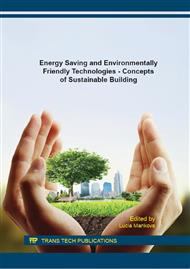p.779
p.786
p.795
p.803
p.811
p.821
p.829
p.836
p.845
Effort and Effectiveness Considerations in Architectural Design: Two Case Studies of Architectural Design Studios
Abstract:
Contemporary architectural design processes show a high degree of complexity: While planners try to fulfill their client’s expectations, they are confronted with a set of constraints and requirements. These include legal constraints such as different building codes, minimum requirements of thermal, acoustical and energy-related indicators as well as structural integrity. In many planning processes, however, the minimum requirements are even less stringent than self-defined expectations. These could - for instance - include a small environmental footprint of the suggested building materials, near zero heating demand, etc. Furthermore, the majority of architectural design processes face a high level of time and cost pressure. Little is known about the time and effort distribution to different processes within such planning processes. These could include consultation with administrative bodies or specific technical planners, performing computational analyses, sketching conceptional options or layouting final designs. In this context, the present contribution explores the time and effort distribution regarding different tasks within the design process in the framework of two design studios. These were conducted with graduate architectural students of the TU Vienna in 2014 and 2015. The concept of these design studios focused on a realistic emulation of real-world project development processes: Participating students were confronted with different (and evolving) visions of their clients, were asked to perform consultation visits with legal bodies of the Viennese building regulation department, and to monitor their time effort for different tasks. These tasks were defined prior to the design studios and allowed for rather detailed classification of different design steps. The two design studios included a roof top extension of a classical 19th century building in Vienna, and the retrofit and extension of a detached house from the 1930ies. This contribution focuses on the time and effort distribution of the different tasks and explores if a general pattern can be identified and derived from the experiences within these design studios.
Info:
Periodical:
Pages:
836-844
Citation:
Online since:
January 2016
Authors:
Price:
Сopyright:
© 2016 Trans Tech Publications Ltd. All Rights Reserved
Share:
Citation:


